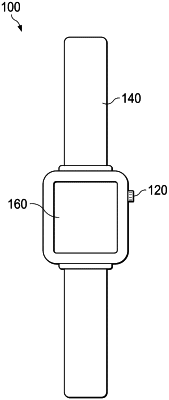| CPC A61B 5/02438 (2013.01) [A61B 5/02416 (2013.01); A61B 5/1118 (2013.01); A61B 5/6813 (2013.01); A61B 2562/0223 (2013.01)] | 19 Claims |

|
1. A method for improving performance of a wearable device while recording a cardio-machine activity, the method comprising:
starting a recording of the cardio machine activity on the wearable device;
measuring, by a motion sensing module of the wearable device, motion data of a user of the wearable device;
measuring, by a heart rate sensing module of the wearable device, heart rate data of the user, the heart rate sensing module comprising a photoplethysmogram (PPG) sensor configured to be worn adjacent to the user's skin;
detecting, by a processor circuit, an end of the cardio-machine activity by:
determining rotational data from the motion data, the rotational data describing a position of the wearable device in a three-dimensional space relative to a frame of reference;
estimating a device heading based on the rotational data;
tracking the heading of the wearable device at multiple time points during the cardio machine activity to estimate a relative heading;
detecting a variable heading by determining that the relative heading exceeds a heading threshold;
detecting the end of the cardio machine activity in response to detecting the variable heading; and
confirming the end of the cardio-machine activity based on at least one of the heart rate data and the motion data; and
in response to the confirming the end of the cardio-machine activity, ending, by the processor circuit, the recording of cardio machine activity.
|